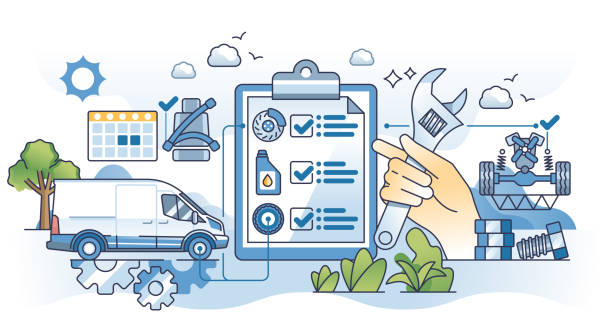Know the feeling of driving away with a freshly fitted GVM upgrade? Well, the vehicle feels sturdier, ready to shoulder the loads you’ve been dreaming about. But the upgrade is just the first chapter. The real story starts with how you look after it. And before you look up Ford Ranger GVM upgrade near me, it pays to know some essential maintenance tips.
Contents
- 1 Suspension Health: Keeping Springs and Shocks in Top Shape
- 2 Tyres and Pressures: Crucial to Load Carrying
- 3 Brakes Under Pressure: Stopping Power You Can Rely On
- 4 Steering and Alignment: Staying Straight on the Road
- 5 Drivetrain and Bearings: Hidden Workhorses That Need Attention
- 6 Monitoring Load Distribution: Balance is Everything
- 7 Regular Inspections: Creating a Post-GVM Routine
Suspension Health: Keeping Springs and Shocks in Top Shape
Did you know that suspension carries the lion’s share of the load after your GVM upgrade? For this, it deserves the closest watch. Heavy-duty springs are built to take punishment, but even they can sag over time, especially if the vehicle is run close to max load for extended stretches. Uneven ride height is often the first giveaway.
Shocks tell their own story too. If you notice oil seeping from the casing, or if the vehicle starts bouncing like a kangaroo on corrugations, it’s a sign they’re wearing out. Heavy-duty shocks are built tougher than factory units, but they also cop more heat and stress, so they benefit from more regular inspections.
Different terrains highlight weaknesses in different ways—soft sand puts strain on rebound, rocky climbs can stress the bushings, and endless corrugations rattle everything to bits. Catching wear early saves you a costly rebuild later, so don’t just rely on feel. Get your suspension checked at set intervals.
Tyres and Pressures: Crucial to Load Carrying
Every kilo of your upgraded capacity ends up on four contact patches no bigger than your hands. Tyres don’t get the glory, but they’re the backbone of safe load carrying. Proper inflation is critical. Run them too soft and they overheat. If you run them too hard, you’ll lose grip while hammering the tread unevenly.
Remember that tyre pressures aren’t one-size-fits-all. A near-empty tub on a day run calls for a different psi than a fully loaded setup with the camper in tow. That’s why you’ll often see seasoned tourers with a gauge always within reach. So, how do you check your tyres?
- Look for uneven tread wear.
- Monitor sidewall bulges or cracks.
- Rotate tyres every 10,000 km.
- Always check pressures before long trips.
Brakes Under Pressure: Stopping Power You Can Rely On
The added capacity of a GVM upgrade doesn’t just mean you can carry more—it also means the brakes have to work harder every single time you stop. Brake pads and rotors take the brunt, and when you’re towing or descending long mountain passes, heat build-up can accelerate wear faster than you’d expect.
Don’t wait until you hear grinding or feel a spongy pedal. Check pad thickness regularly, inspect rotors for glazing or scoring, and flush brake fluid on schedule. Fluid absorbs heat and moisture, and once it boils, braking efficiency plummets.
Steering and Alignment: Staying Straight on the Road
When you increase payload, you’re changing the forces acting on steering geometry. Angles like camber, caster, and toe shift as the suspension settles under extra weight. The result? Tyres scrubbing out early, or the wheel tugging to one side when you should be tracking straight.
Signs of misalignment aren’t always obvious. Sometimes it’s a faint vibration at highway speeds, or a steering wheel that doesn’t return to centre as smoothly as before. Left unchecked, poor alignment will chew through tyres and make long drives a chore.
Drivetrain and Bearings: Hidden Workhorses That Need Attention
The drivetrain doesn’t get the same spotlight as suspension, but it works just as hard. Universal joints and CVs spin under greater torque when the vehicle’s carrying more. Wheel bearings shoulder constant pressure too, and if they start to loosen or pit, you’ll feel it as a vibration through the steering or hear it as a low growl at speed.
Gearboxes and diffs aren’t immune either. Extra weight means higher thermal loads on lubricants, which can break down quicker than you’d expect. Staying ahead with oil changes is crucial to protect gear surfaces from wear.
If you notice clunking when shifting from drive to reverse, or free play in the hubs, don’t shrug it off. These are warning signs that the hidden workhorses of your vehicle need attention before failure strands you in the middle of nowhere.
Monitoring Load Distribution: Balance is Everything
A GVM upgrade might let you carry more, but how you carry it makes all the difference. Poorly distributed weight affects stability, braking, and even tyre wear. Picture all your gear stacked high at the back—that’s a recipe for body roll and unpredictable handling. Follow these smart load distribution practices:
- Store heavy gear low and close to the vehicle’s centre.
- Avoid overloading one side of the vehicle.
- Factor in tow-ball download when towing a trailer.
Regular Inspections: Creating a Post-GVM Routine
The best way to stay ahead of wear is to make inspections part of your driving routine. A quick walkaround before a trip isn’t enough. You’ll need to create a checklist that includes suspension, tyres, fluids, and even the way your load is stacked. After every big adventure, give the whole setup a once-over.
Keep up the checks, respect the limits, and your vehicle will reward you with years of reliable service. As the saying goes, “look after your rig, and it’ll look after you.” That’s the real return on a well-executed upgrade.




